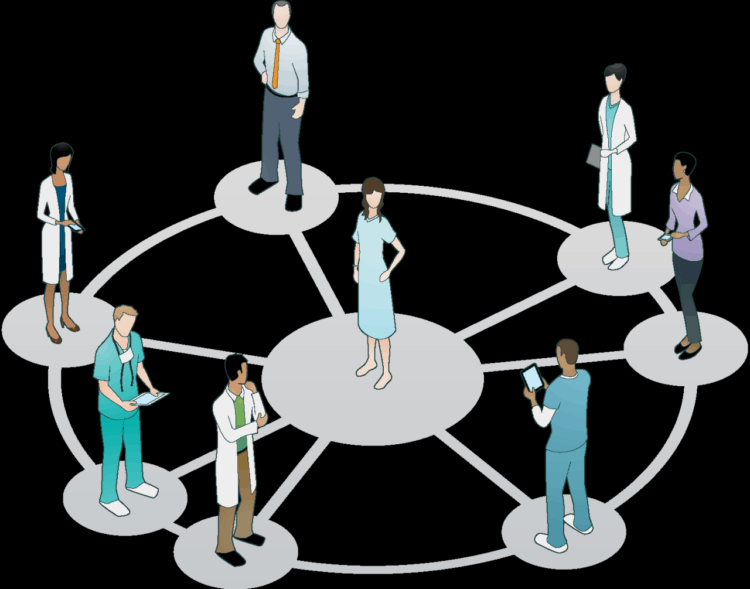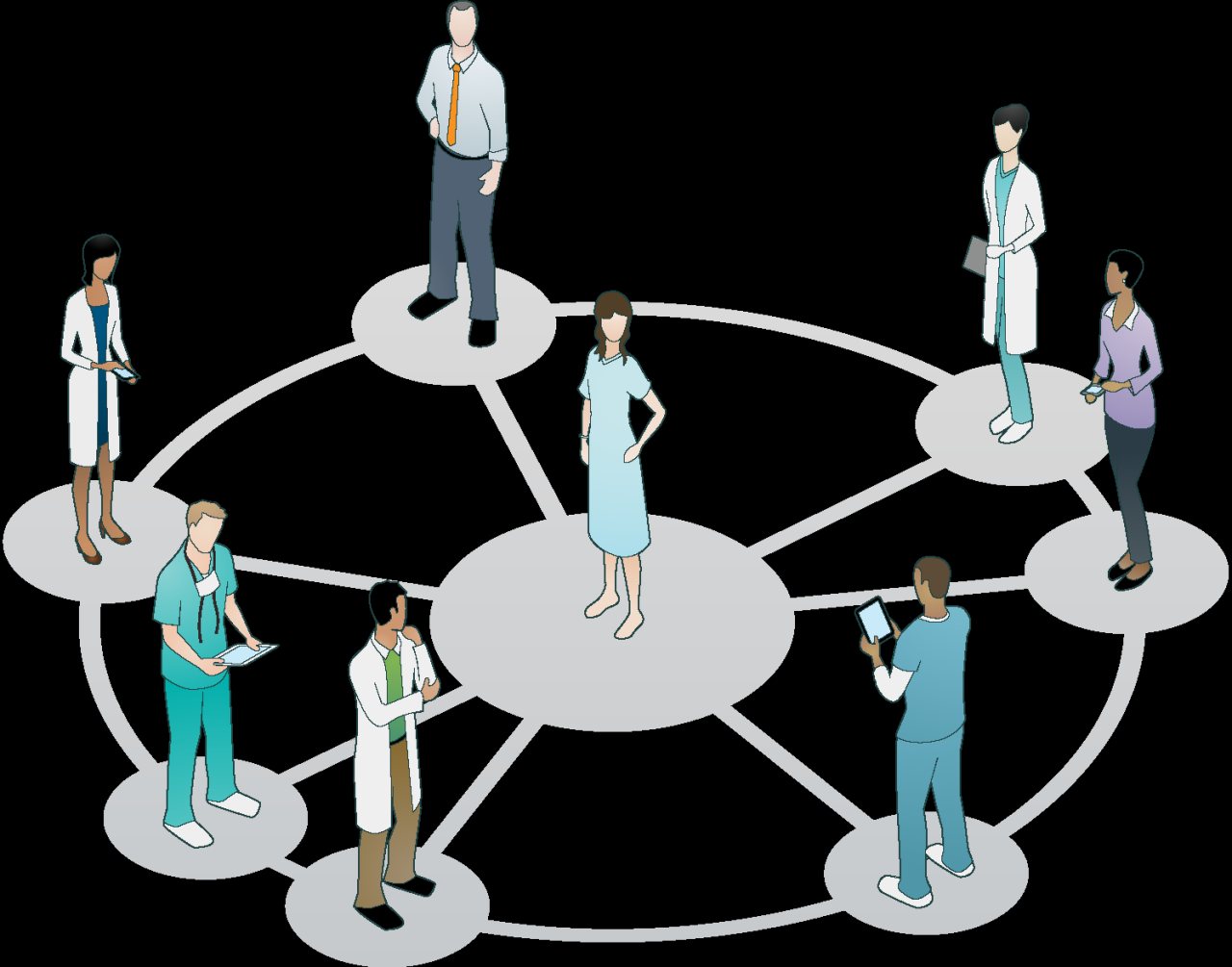In today’s interconnected professional landscape, collaboration isn’t merely a buzzword; it’s the very bedrock of productivity, innovation, and competitive advantage. The ability of teams to work together effectively, regardless of geographical distance or time zones, has become paramount. This imperative has driven the explosive growth of seamless collaboration solutions, a sophisticated ecosystem of digital tools and platforms designed to break down communication barriers, streamline workflows, and foster a truly integrated teamwork experience. Far from just simple chat apps, these comprehensive solutions are redefining how work gets done, transforming disparate efforts into a unified, synergistic force. They are the essential enablers of modern teamwork, pushing the boundaries of what distributed teams can achieve.
The Evolution of Workplace Collaboration: From Snail Mail to Digital Hubs
To truly appreciate the profound impact of modern collaboration solutions, it’s vital to contextualize their emergence within the historical evolution of how professionals have communicated and worked together. The journey has been one of continuous acceleration and increasing interconnectedness.
A. The Early Days: Analog and Disconnected Workflows
For a significant part of industrial history, workplace collaboration was largely physical, sequential, and often asynchronous due to technological limitations.
- Paper-Based Processes: Documents were physical, revisions were made with red pens, and approvals required physical signatures. This process was inherently slow, prone to loss, and difficult to track.
- Face-to-Face Meetings: Most decisions and brainstorming happened in person. While effective for localized teams, it severely limited collaboration across different offices or with remote colleagues.
- Basic Communication Tools: Telephones and fax machines were the primary means of instant long-distance communication, but they lacked the ability to easily share complex documents or track conversations over time.
- Information Silos: Departments often operated in isolation, with information confined to specific teams or individuals. Sharing knowledge was cumbersome, leading to duplication of effort and missed opportunities.
- Sequential Workflows: Projects typically moved in a linear fashion, from one team or individual to the next. Delays in one stage would ripple through the entire project, extending timelines dramatically.
B. The Digital Dawn: Email and Early Digital Sharing
The advent of personal computers and the internet began to digitize aspects of collaboration, though limitations remained.
- Email Revolution: Email emerged as a game-changer, enabling rapid, asynchronous communication and document sharing across distances. It replaced faxes and physical memos, becoming the backbone of corporate communication. However, email threads could quickly become unmanageable, and version control for attachments was a nightmare.
- Basic File Sharing: Early network drives and rudimentary file transfer protocols allowed for some digital document sharing. Still, co-editing was difficult, leading to ‘save as’ versions and confusion over the ‘master’ document.
- Early Project Management Software (On-Premise): Desktop-based or client-server project management tools began to emerge, helping track tasks and deadlines, but they were often complex to set up and lacked real-time collaborative features.
- Limited Remote Access: While VPNs enabled remote access to company networks, the experience was often slow and clunky, making true remote collaboration challenging.
C. The Cloud Era: Real-time, Integrated, and Global
The rise of cloud computing, pervasive internet access, and the mobile revolution truly propelled collaboration into its modern, seamless form.
- Real-time Document Collaboration: Cloud-based productivity suites (e.g., Google Workspace, Microsoft 365) allowed multiple users to co-edit documents, spreadsheets, and presentations simultaneously, seeing changes in real time. This fundamentally transformed content creation.
- Instant Messaging and Persistent Chat: Tools like Slack, Microsoft Teams, and Google Chat moved communication from cluttered email inboxes to organized, persistent channels, enabling quick discussions, file sharing, and integration with other apps.
- Video Conferencing Sophistication: High-quality video conferencing platforms (e.g., Zoom, Google Meet, Microsoft Teams) became ubiquitous, making virtual face-to-face interactions seamless and often preferred for global teams.
- Integrated Workspaces: The trend shifted towards platforms that consolidated communication, file sharing, project management, and application integrations into a single, unified digital workspace, reducing context switching and improving workflow efficiency.
- Democratization of Remote Work: These tools were instrumental in enabling the widespread adoption of remote and hybrid work models, proving that teams could remain productive and connected even when physically dispersed.
This continuous evolution underscores that modern seamless collaboration solutions are not just individual tools but integrated platforms designed to mirror and enhance the dynamic, interconnected nature of today’s work.
Core Pillars of Seamless Collaboration Solutions
Effective collaboration solutions are built upon several integrated pillars, each addressing a critical aspect of how teams work together in a digital environment.
A. Centralized Communication Hubs
At the heart of seamless collaboration are platforms that centralize and streamline all forms of team communication, moving beyond the fragmentation of traditional email.
- Persistent Chat Channels: These allow teams to create dedicated channels for projects, departments, or topics. Conversations are searchable and accessible to all members, ensuring continuity and knowledge retention. Features include threads, mentions, and emoji reactions.
- Direct and Group Messaging: For one-on-one or small group discussions that don’t require a public channel, instant messaging provides quick, informal communication.
- Integrated Video and Voice Conferencing: The ability to instantly launch a video or voice call directly from a chat channel, with screen sharing, virtual backgrounds, and recording capabilities, eliminates the need for separate conferencing tools.
- Announcement Channels: Dedicated spaces for company-wide or team-wide announcements, ensuring important information reaches everyone.
- External Collaboration: Secure features to invite external partners, clients, or vendors into specific channels for focused communication, maintaining security boundaries.
B. Real-time Document Co-creation and Management
Beyond simple file sharing, modern solutions enable simultaneous, real-time work on shared documents, spreadsheets, and presentations.
- Simultaneous Co-editing: Multiple users can edit the same document at the same time, seeing each other’s changes live. This eliminates version control headaches and accelerates content creation.
- Version History and Rollback: Automatic tracking of all document revisions, allowing users to view previous versions and easily roll back to an earlier state if needed.
- Commenting and Annotation Tools: Built-in features for adding comments, suggestions, and highlighting specific sections of documents, facilitating feedback and review cycles.
- Secure Sharing and Access Control: Granular control over who can view, edit, or comment on documents, ensuring data security and confidentiality.
- Centralized File Storage: Secure cloud storage (e.g., Google Drive, SharePoint, Dropbox) integrated directly into the collaboration platform, making files easily accessible from anywhere.
C. Integrated Task and Project Management
Seamless collaboration extends to managing workflows, tasks, and entire projects, ensuring transparency and accountability.
- Task Assignment and Tracking: Ability to create, assign, and track individual tasks within a shared project space, with due dates, priorities, and progress indicators.
- Kanban Boards and Gantt Charts: Visual tools that provide an overview of project progress, dependencies, and bottlenecks, allowing teams to manage workflows effectively.
- Shared Calendars and Scheduling: Integrated calendars for team meetings, project milestones, and deadlines, simplifying scheduling and ensuring everyone is aware of important events.
- Automated Reminders and Notifications: Configurable alerts for upcoming deadlines, task completions, or changes in project status, keeping teams informed without manual oversight.
- Resource Management (Basic): Some solutions offer basic features to allocate and track team member workloads, preventing burnout and optimizing resource utilization.
D. Application Integration and Extensibility
Truly seamless solutions don’t operate in a vacuum; they integrate with a vast ecosystem of other business applications.
- Third-Party App Integrations: Connectors to popular business tools like CRM systems (Salesforce), ticketing systems (Jira, Zendesk), design tools (Figma, Adobe Creative Cloud), and development platforms (GitHub), allowing data and notifications to flow directly into the collaboration hub.
- Custom Workflows and Bots: The ability to create custom automated workflows and chatbots that can perform repetitive tasks, provide quick information, or integrate with bespoke internal systems.
- APIs and Webhooks: Open APIs and webhook capabilities allow developers to extend the platform’s functionality, build custom integrations, and connect it to virtually any other system.
- Unified Search: A powerful search function that spans across all communication, files, tasks, and integrated applications, making it easy to find information regardless of where it resides.
E. Robust Security and Compliance Features
Given the sensitive nature of information shared, security and compliance are non-negotiable pillars.
- End-to-End Encryption: For communications, files, and data storage to protect information from unauthorized access.
- Granular Access Controls: Role-based access, multi-factor authentication (MFA), and single sign-on (SSO) to control who can access what features and data.
- Data Loss Prevention (DLP): Tools and policies to prevent sensitive information from leaving the organizational boundaries.
- Audit Logs and Compliance Reporting: Comprehensive logging of user activities and data access, crucial for auditing and meeting regulatory compliance requirements (e.g., GDPR, HIPAA, ISO 27001).
- Regular Security Audits: Continuous monitoring and penetration testing to identify and remediate vulnerabilities.
Transformative Advantages of Seamless Collaboration Solutions
The adoption of comprehensive collaboration solutions yields a multitude of profound benefits, fundamentally reshaping how organizations operate and empowering teams to achieve more than ever before.
A. Dramatically Enhanced Productivity and Efficiency
By centralizing communication and workflows, these platforms eliminate common inefficiencies that plague traditional workplaces.
- Reduced Context Switching: Consolidating tools means less jumping between applications, saving time and mental energy, allowing users to stay focused on tasks.
- Streamlined Communication: Less time spent on endless email threads, more time on actionable discussions in organized channels, leading to quicker decision-making.
- Faster Information Retrieval: Powerful search capabilities across all content (chats, files, tasks) ensure that information is easily found, reducing wasted time looking for documents or conversations.
- Automated Routine Tasks: Integration with other apps and custom bots can automate repetitive workflows (e.g., status updates, data entry), freeing up human effort for higher-value activities.
B. Fostering Innovation and Creativity
When teams collaborate seamlessly, ideas flow more freely, and diverse perspectives are more easily integrated, fueling innovation.
- Accelerated Brainstorming: Real-time whiteboarding, shared documents, and quick chat discussions enable rapid brainstorming and idea generation.
- Cross-Functional Synergy: Breaking down departmental silos encourages cross-functional teams to collaborate, bringing together varied expertise to solve complex problems more creatively.
- Knowledge Sharing and Retention: Centralized knowledge bases, searchable chat histories, and shared documentation ensure that institutional knowledge is captured and accessible, preventing its loss when employees leave.
- Rapid Prototyping and Feedback: Design teams can quickly share prototypes and gather instant feedback from stakeholders, iterating faster on new concepts.
C. Enabling Flexible and Distributed Work Models
The rise of remote and hybrid work models would be virtually impossible without robust collaboration solutions, offering unparalleled flexibility.
- Location Independence: Teams can work effectively from anywhere in the world, breaking down geographical barriers and enabling access to a wider talent pool.
- Time Zone Flexibility: Asynchronous communication capabilities (persistent chat, shared documents) allow teams across different time zones to collaborate efficiently without requiring real-time overlap for every interaction.
- Improved Work-Life Balance: The flexibility offered by these tools can contribute to a better work-life balance for employees, leading to higher job satisfaction and retention.
- Business Continuity: In unforeseen circumstances (e.g., natural disasters, pandemics), these solutions ensure that work can continue uninterrupted, providing critical business continuity.
D. Enhanced Transparency and Accountability
Centralized platforms inherently provide greater visibility into work progress and individual contributions.
- Clear Task Ownership: Assigning tasks within the platform makes ownership explicit, reducing confusion and increasing accountability.
- Project Progress Tracking: Dashboards and project views provide real-time updates on project status, allowing managers to identify bottlenecks and intervene proactively.
- Visible Communication: Public chat channels ensure that decisions and discussions are transparent and accessible to relevant team members, reducing information hoarding.
- Performance Insights: Analytics on task completion, communication patterns, and project milestones can provide valuable insights into team performance and areas for improvement.
E. Strengthening Company Culture and Employee Engagement
Beyond just tasks, collaboration solutions can play a vital role in building a stronger, more connected company culture.
- Increased Engagement: Easy communication and recognition features foster a sense of belonging and encourage employees to participate more actively.
- Stronger Team Cohesion: Regular interactions, both formal and informal, help build rapport and strengthen bonds among team members, even when physically separated.
- Improved Onboarding: New employees can quickly get up to speed by accessing historical conversations, project documents, and team knowledge bases.
- Direct Feedback Loops: Platforms facilitate direct and informal feedback, improving communication channels between management and staff.
Challenges and Considerations in Adopting Seamless Collaboration Solutions
Despite their immense advantages, implementing and maximizing seamless collaboration solutions can present several challenges that organizations must thoughtfully address.
A. Tool Sprawl and Fragmentation
Paradoxically, the abundance of collaboration tools can lead to tool sprawl and fragmentation. If not managed strategically, different teams or departments might adopt their own preferred tools (e.g., one team uses Slack, another Microsoft Teams, a third uses a different project management tool), leading to:
- Disconnected Workflows: Information gets siloed in different applications, making it difficult to get a holistic view of projects or find critical information.
- Increased Cost: Paying for multiple overlapping subscriptions unnecessarily.
- User Fatigue: Employees have to constantly switch between tools, increasing cognitive load and reducing efficiency.
- Security Gaps: Managing security policies and data governance across numerous disparate tools becomes significantly more complex.
B. User Adoption and Change Management
Introducing new collaboration tools requires a significant shift in habits and workflows for employees. User adoption can be a major hurdle if not managed properly.
- Resistance to Change: Employees may be comfortable with old methods (e.g., relying solely on email) and resist learning new tools.
- Lack of Training: Insufficient or ineffective training can leave users feeling overwhelmed or frustrated, leading to low engagement.
- Perceived Complexity: If the solution is not intuitive or if too many features are introduced at once, users may find it overwhelming.
- Cultural Barriers: Organizations with hierarchical structures or a culture of information hoarding may struggle to adapt to the transparency and openness promoted by these tools.
C. Information Overload and Digital Fatigue
While centralizing communication is beneficial, the constant stream of notifications and messages in collaboration platforms can lead to information overload and digital fatigue.
- Notification Overload: Too many alerts can distract users, leading to them ignore important messages.
- ‘Always On’ Culture: The immediacy of chat can create an expectation of constant availability, blurring work-life boundaries and leading to burnout.
- Difficulty Filtering Noise: In active channels, important information can get lost amidst casual conversations or irrelevant updates.
- Meeting Fatigue: While video conferencing is vital, an excessive number of virtual meetings can lead to exhaustion, especially if not managed efficiently.
D. Security and Data Governance Concerns
While modern solutions offer robust security features, the sheer volume of sensitive data shared through these platforms necessitates careful management.
- Data Residency and Compliance: Ensuring data is stored in compliant regions and adhering to industry-specific regulations (e.g., GDPR, HIPAA, PCI DSS) is critical.
- Shadow IT: Employees using unapproved collaboration tools can create significant security risks and data governance challenges.
- Insider Threats: The increased sharing of information within the platform can, if not properly managed with access controls, increase the risk of insider data breaches.
- Phishing and Malware: Collaboration platforms can become vectors for phishing attacks or malware if users are not vigilant.
E. Integration Complexity
While integration is a benefit, it can also be a challenge. Integrating the primary collaboration hub with numerous existing legacy systems or highly customized internal applications can be complex and resource-intensive. Maintaining these integrations as systems evolve adds ongoing overhead.
F. Measuring ROI and Effectiveness
Quantifying the precise Return on Investment (ROI) of collaboration solutions can be challenging. While anecdotal evidence of improved teamwork is common, concretely measuring productivity gains, reduced project timelines, or enhanced innovation can be difficult without robust metrics and clear benchmarks.
Best Practices for Maximizing Seamless Collaboration Solutions
To effectively implement and derive maximum value from seamless collaboration solutions, organizations should adopt a strategic, user-centric, and disciplined approach.
A. Strategic Planning and Needs Assessment
Before selecting or deploying any solution, conduct a thorough strategic planning and needs assessment.
- Identify Core Requirements: What specific communication, project management, and integration needs do your teams have?
- Define Success Metrics: How will you measure the ROI and effectiveness of the solution (e.g., reduced email volume, faster project completion, higher employee satisfaction)?
- Involve Stakeholders: Get input from various departments and roles to ensure the chosen solution meets diverse needs.
- Phased Rollout Plan: Plan a gradual rollout, perhaps starting with a pilot team, to gather feedback and refine the implementation strategy.
B. Prioritize User Adoption Through Training and Advocacy
User adoption is paramount. Invest heavily in a comprehensive change management and training strategy.
- Comprehensive Training: Provide clear, accessible training resources (videos, guides, live sessions) tailored to different user roles.
- Identify Champions: Empower internal ‘champions’ or ‘super users’ within teams to advocate for the tool, provide peer support, and share best practices.
- Communicate Benefits Clearly: Articulate the ‘why’ behind the new solution – how it will make employees’ work easier and more effective.
- Leadership Buy-in: Ensure leadership actively uses and promotes the platform, leading by example.
C. Establish Clear Guidelines and Best Practices
To combat information overload and ensure effective use, establish and communicate clear guidelines and best practices for the platform.
- Channel Etiquette: Define when to use public channels vs. direct messages, how to use threads, and naming conventions for channels.
- Notification Management: Provide guidance on managing notifications to prevent overload.
- Meeting Best Practices: Encourage efficient virtual meetings with clear agendas, active participation, and designated note-takers.
- Document Management: Set standards for file naming, folder structures, and access permissions.
- Role-Based Access: Implement clear roles and permissions to ensure data security and prevent unauthorized access.
D. Integrate with Key Business Applications
Leverage the power of integration. Connect your core collaboration platform with other essential business applications.
- Unified Workflows: Integrate with CRM, ERP, project management, ticketing, and development tools to create seamless data flow and eliminate manual data entry.
- Notification Consolidation: Direct notifications from integrated apps into relevant collaboration channels, providing a single source of alerts.
- Automation: Use built-in automation features or custom bots to automate routine tasks triggered by events in integrated systems.
E. Implement Robust Security and Data Governance Policies
Proactive security and rigorous data governance are non-negotiable.
- Single Source of Truth: Establish the collaboration platform as the official channel for sensitive discussions and document sharing, discouraging ‘Shadow IT’.
- Regular Audits: Conduct regular security audits and compliance checks on the platform and its usage.
- Data Residency and Retention Policies: Ensure adherence to all relevant data residency laws and implement clear data retention and deletion policies.
- Employee Training: Continuously educate employees on cybersecurity best practices, phishing awareness, and responsible data sharing within the platform.
F. Monitor Usage and Gather Feedback Continuously
Collaboration solutions are dynamic. Continuously monitor their usage and gather feedback for ongoing optimization.
- Usage Analytics: Track platform adoption rates, active users, channel engagement, and feature usage to identify areas for improvement or underutilized features.
- User Surveys and Feedback Sessions: Regularly solicit feedback from employees on their experience with the platform, pain points, and desired enhancements.
- Iterative Improvement: Use the gathered data and feedback to make continuous improvements to the platform configuration, guidelines, and training materials.
The Future Trajectory of Seamless Collaboration
The landscape of work is perpetually evolving, and so too are the solutions designed to foster collaboration. The future promises even more intelligent, immersive, and integrated collaboration experiences.
A. AI-Powered Intelligent Assistants
The next generation of collaboration tools will heavily feature AI-powered intelligent assistants. These will go beyond simple chatbots to:
- Meeting Summarization: Automatically summarize meeting transcripts, highlight action items, and assign tasks.
- Contextual Information Retrieval: Pull relevant documents, conversations, or data points based on ongoing discussions.
- Proactive Suggestions: Suggest connections, resources, or next steps based on project context and team activity.
- Automated Workflow Orchestration: More sophisticated automation that can initiate complex cross-application workflows based on natural language commands.
B. Immersive and Spatial Collaboration (Metaverse/XR)
As AR/VR and metaverse technologies mature, collaboration will become more immersive.
- Virtual Meeting Spaces: Teams meeting in persistent, customized 3D virtual offices, leveraging avatars and spatial audio for a more engaging experience.
- Interactive 3D Models: Designers and engineers collaborating on 3D models in a shared virtual space, manipulating and annotating them in real-time.
- Augmented Reality Overlays: Overlaying digital information onto the physical workspace, allowing remote experts to guide on-site workers through complex tasks with AR instructions.
- Persistent Digital Workspaces: Virtual environments that act as permanent team hubs, accessible anytime, anywhere, enhancing the feeling of co-presence.
C. Hyper-Personalization and Adaptive Workflows
Collaboration solutions will become increasingly personalized, adapting to individual user preferences and work styles.
- Adaptive Interfaces: Customizing dashboards, notification preferences, and tool layouts based on user roles and activities.
- Smart Prioritization: AI-driven prioritization of messages and tasks to cut through noise and highlight what’s most important to each individual.
- Context-Aware Recommendations: Suggesting relevant tools, documents, or collaborators based on the task at hand.
- Automated ‘Flow State’ Protection: Tools that intelligently manage notifications and interruptions during periods of deep work.
D. Deeper Integration with Business Intelligence and Analytics
Collaboration platforms will become richer sources of operational insights.
- Workflow Analytics: Providing granular data on task completion times, bottlenecks, and team productivity trends.
- Communication Network Analysis: Visualizing communication patterns to identify key influencers, information flow issues, or isolated teams.
- Sentiment Analysis: Monitoring team sentiment (anonymously and ethically) to proactively identify morale issues or potential conflicts.
- Impact Measurement: Linking collaboration activities directly to business outcomes (e.g., how specific team communication patterns impact project success rates).
E. Emphasis on Ethical AI and Data Privacy
As AI integration deepens, so will the focus on ethical AI and robust data privacy.
- Transparent AI: Clear explanations of how AI models are making suggestions or automating tasks.
- Privacy-Preserving Collaboration: New cryptographic techniques that allow collaboration on sensitive data without exposing it directly to the platform provider.
- User Control over Data: Greater control for individuals over their own data within collaboration platforms, including what is shared and how it is used for AI training.
- Compliance by Design: Building compliance frameworks directly into the core architecture of collaboration solutions.
Conclusion
Seamless collaboration solutions are no longer just supplementary tools; they are the fundamental digital infrastructure that empowers modern enterprises. By breaking down geographical barriers, unifying communication streams, and streamlining workflows, these platforms have redefined what effective teamwork looks like in an increasingly distributed world. They are the essential conduits through which ideas are sparked, projects are advanced, and innovations are brought to life.
While the journey to truly seamless collaboration involves navigating challenges such as tool sprawl, user adoption hurdles, and the ever-present risk of information overload, the immense benefits far outweigh these complexities. Organizations that strategically plan, diligently train, and continuously optimize their collaboration ecosystems will unlock unparalleled gains in productivity, foster a vibrant culture of innovation, and secure a critical competitive edge. As the future of work continues to evolve towards even more intelligent and immersive experiences, the mastery of seamless collaboration will remain the definitive blueprint for any team striving to achieve collective excellence and transform disparate efforts into a unified, powerful force for progress.











